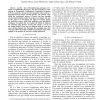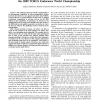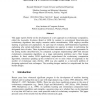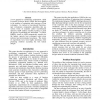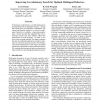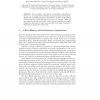102
click to vote
EC
2008
15 years 8 days ago
2008
Abstract-- This paper presents a method for creating evaluation functions that efficiently promote coordination in a multiagent system, allowing single-agent evolutionary computati...
115
Voted
CEC
2010
IEEE
15 years 12 days ago
2010
IEEE
Abstract— Locality - how well neighbouring genotypes correspond to neighbouring phenotypes - has been described as a key element in Evolutionary Computation. Grammatical Evolutio...
GECCO
2008
Springer
15 years 1 months ago
2008
Springer
This note is best described as a ‘Research Challenge’, and concerns building an ultra high frequency (UHF) trading system. The emphasis is on addressing the problems posed by ...
129
click to vote
CEC
2010
IEEE
15 years 1 months ago
2010
IEEE
The TORCS Endurance World Championship is an international competition in which programmers develop and tune their drivers to race against each other using TORCS, a state-of-the-ar...
IIS
2000
15 years 1 months ago
2000
This paper reports briefly on the development of a new approach to evolutionary computation, called the Learnable Evolution Model or LEM. In contrast to conventional Darwinian-typ...
AAAI
2000
15 years 1 months ago
2000
A new approach to evolutionary computation, called Learnable Evolution Model (LEM), has been applied to the problem of optimizing tube structures of heat exchangers. In contrast t...
100
click to vote
IJCAI
2003
15 years 1 months ago
2003
Evolutionary computation is a useful technique for learning behaviors in multiagent systems. Among the several types of evolutionary computation, one natural and popular method is...
EVOW
2010
Springer
15 years 3 months ago
2010
Springer
Divide-and-Evolve (DaE) is an original "memeticization" of Evolutionary Computation and Artificial Intelligence Planning. DaE optimizes either the number of actions, or t...
124
click to vote
ECAL
1995
Springer
15 years 3 months ago
1995
Springer
After an outline of the history of evolutionary algorithms, a new ( ) variant of the evolution strategies is introduced formally. Though not comprising all degrees of freedom, it i...
105
click to vote
GECCO
2006
Springer
15 years 3 months ago
2006
Springer
1 Learnable Evolution Model (LEM) is a form of non-Darwinian evolutionary computation that employs machine learning to guide evolutionary processes. Its main novelty are new type o...

